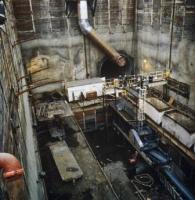Despicable Them: Fewer Buses, Higher Fares, Subway-to-Sea Do Not Make a Transit System
 LA Metro Transit Line Construction. Sept. 2010. Photo: Metro Transportation Library and Archive
LA Metro Transit Line Construction. Sept. 2010. Photo: Metro Transportation Library and Archive
Los Angeles, a sprawling city of more than 450 square mile and a population of four or five million, has the worst public transit system in the country, and the mayor’s blundering efforts to improve traffic flow have been costly utter failures.
Los Angeles -- One million trees, greenest city in America, 12-2 building permit process, they all have one thing in common: They are all empty political slogans put forward for Los Angeles Mayor Antonio Villaraigosa's political advantage without him having any intention or ability to deliver them.
You can add to that list the subway-to-the-sea and mass transit project 30/10, which are far more sinister, costly and destructive. Ballot Measure R was the mayor's greatest fraud, another half-percent sales tax increase on top of the 1 percent the public has generously supported to improve what is one of the worst big city public transit systems, if not the worst, in America.
Transit systems are supposed to move people from one point to another efficiently. That is, efficient to the degree that the price is right and buses, trains, subways and shuttles connect with each other with short wait times. The MTA (Metropolitian Transit Authority) system doesn't do that. There simply is poor inter-connection between the various lines and long wait times -- a problem that has gotten worse as bus lines and frequency have been reduced, most dramatically by the drastic 5 percent cut now being implemented to save $30 million.
Even the trains and subway lines don't connect, which is why the downtown connector is the single most valuable project that is on the drawing boards. From its conception, critics have called the rail system the subway-to-nowhere (except downtown), because it doesn't deliver people to the airport, Coliseum, Hollywood Bowl or other major venues. Its purpose was to spur downtown development, to allow developers to make tens of billions of dollars in profits from skyscraper project subsidized by the public through the Community Redevelopment Agency.
Even as light rail lines have been extended, total traffic on the MTA remains only slightly above the million passengers achieved decades ago with more than 80 percent using buses, not trains. The only time that number changed was in the mid-1980s when fares were cut in half for a year and the number of passengers doubled. If MTA officials had followed through on what they learned from that experiment, we would now have less traffic congestion and a vast network of bus lines, busways and rapid buses moving people from where they are to where they want to go and could be adding trains where the cost and lengthy time of construction justified them.
A case in point is how city and county elected officials took advantage of a small constituency's objections and broke the promise to build a subway across the San Fernando Valley. Instead, the Valley got an anagram of subway -- a busway -- in three years at a fraction of the cost of light rail or subway, and passenger use is twice what was predicted while rail lines carry fewer people than projected. If busways had been built on the Expo line and in other high-traffic areas, we would now have a system that works for people and could be in the process of upgrading segments to rail. Instead, we're taking the money saved from this round of service cuts and putting it into a rapid bus line down Wilshire Boulevard -- except in this area of the hoi polloi in Westwood -- and then we're going to replace it with a subway that will take years and never get to the sea at all.
The Valley, the South Bay and other parts of the county are getting little or nothing from Measure R and 30/10, the plan to get the federal government to front the tax revenue from the sales tax increase to speed up construction. All the projects planned will never be built before the money runs out so they will be coming back for yet another tax increase when that happens even though the half-percent is still being paid off for 20 more years. What they are building is not a public transit system. It is a boondoggle for contractors, lobbyists, construction unions and all the rest who profit from these major public works projects and it will only open the door to massive densification on the Westside and wherever else there's a train or subway stop.
The MTA's own studies show traffic congestion will only be worse when all these billions are spent and construction completed. Nothing is going to stop this train from running over us but we should all be clear: We need a transit system that works now and we'll need it even more in 10, 20, or 30 years from now.



 del.icio.us
del.icio.us Digg
Digg












Post your comment